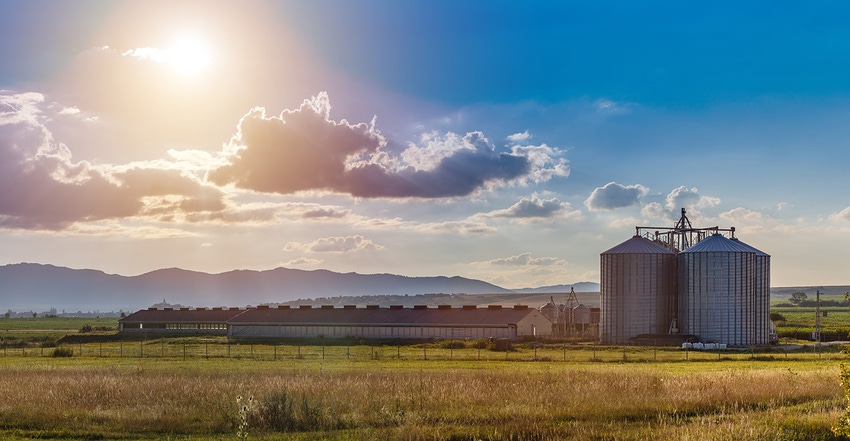March 12, 2021

A decrease in government payments and higher farm production costs in 2021 could lead to lower farm income in spite of higher crop and livestock prices, according to the latest analysis of national and global agricultural trends from the University of Missouri.
Yet, net farm income of $112 billion in 2021 would still be much higher than it was from 2015 to 2019, according to the analysts at the Food and Agricultural Policy Research Institute. Net farm income increased to $121 billion in 2020, the highest level since 2013, primarily because of $46 billion in government payments.
“The COVID-19 pandemic upended agricultural markets, contributing to a dismal outlook for the farm economy in the spring and summer of 2020,” said Patrick Westhoff, FAPRI director and Howard Cowden Professor of Agricultural and Applied Economics in the MU College of Agriculture, Food and Natural Resources (CAFNR). “A series of emergency support programs provided record government payments to farmers, and prices for many commodities rebounded in the final months of the year, resulting in a large increase in 2020 net farm income. Looking ahead, the outlook is uncertain, but certainly more optimistic than it was a few months ago.”
Economists with FAPRI and the MU Agricultural Markets and Policy (AMAP) team release the annual U.S. Agricultural Market Outlook report each spring. The baseline projections for agricultural and biofuel markets were prepared using market information available in January, but it does not reflect any subsequent policy changes.
A look at the projections
Increasing imports by China explain much of the recent strength in grain and oilseed markets. If China’s purchases continue at the recent pace, U.S. exports and market prices could be higher than projected.
“Higher prices and assumed normal spring planting conditions allow 2021 total area planted to major crops to rebound to 2018 levels,” Westhoff said. “That could allow planted acreage for corn, soybeans and wheat to all expand in the same year. Projected soybean acreage exceeds 90 million acres.”
Projections show average prices for livestock and poultry increase in 2021, as the sector returns to more normal operating conditions. After the pandemic reduced driving and fuel use in 2020, projected ethanol production and use increase in 2021, but do not immediately rebound to pre-COVID levels. Projections show major crop prices retreat from recent peaks, but remain above the prices of 2015-2019. For the crop to be harvested in the fall of 2021, projected corn prices average $4.06 per bushel and soybeans average $10.61 per bushel.
After the pandemic reduced driving and fuel use in 2020, projected ethanol production and use increase in 2021, but do not immediately rebound to pre-COVID levels.
Crop insurance and the price loss coverage (PLC) program account for most projected support to the farm sector. These programs provide far less support than the market facilitation program (MFP), the coronavirus food assistance program (CFAP) and the paycheck protection program (PPP) provided in 2020.
The final rounds of ad hoc assistance payments push total outlays on selected mandatory farm-related programs to a record $51 billion in fiscal year (FY) 2021. Without this additional assistance, the total drops back to an annual average of $23 billion between FY 2022 and FY 2030, only slightly above the FY 2015-FY 2019 average.
Higher levels of net farm income support an increase in land and farm asset values in 2021. The result is the first slight dip in the farm debt-to-asset ratio since 2012. In later years, declining real net farm income and an eventual increase in interest rates put pressure on asset values and cause the debt-to-asset ratio to resume its increase.
Consumer food price inflation increased to 3.4% in 2020, in part because of a wider gap between producer prices for livestock and consumer prices for meat. Food inflation moderates to 2.1% in 2021 as conditions normalize, and food inflation is similar to overall inflation in subsequent years.
More information
FAPRI will host two virtual events related to the U.S. Agricultural Market Outlook in March. On Wednesday, March 17, Westhoff will be featured on the Engaging 4 MO webinar series to highlight some key results of the report. On Friday, March 26, FAPRI will host a virtual Womack Conference. Details on that event are still being finalized and will be available on the FAPRI website.
The U.S. Agricultural Market Outlook is prepared annually by economists with FAPRI and AMAP and is updated each August. Westhoff said the report gives policymakers, farmers, agribusinesses and the public an overview of the state of the U.S. farm economy. The market projections it contains can be useful to farmers making production choices, to policymakers trying to decide how to respond to agricultural issues, to lenders who must decide whether to make loans and to agribusinesses making investment decisions.
“The information is meant to serve a variety of purposes,” Westhoff said. “It’s a broad-brush, big-picture look at agriculture. Our goal is to give a general view of what the next 10 years might look like if we stay on the current path. The baseline outlook can then serve as a point of comparison for evaluating the impacts of possible policy changes.”
Source: University of Missouri, which is solely responsible for the information provided and is wholly owned by the source. Informa Business Media and all its subsidiaries are not responsible for any of the content contained in this information asset.
You May Also Like




